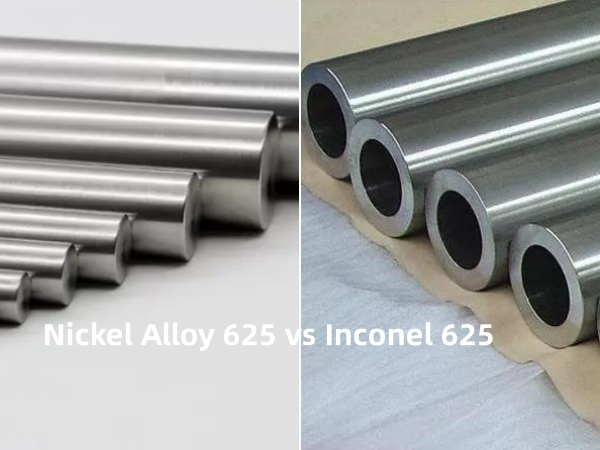Both of nickel alloy 625 and Inconel 625 can offer excellent strength and corrosion resistance in extreme temperature. But how to distinguish one with another? Let’s look at the key differences between nickel alloy 625 and Inconel 625.

Chemical Composition:
|
|
Nickel |
Chromium |
Manganese |
Iron |
Molybdenum |
Niobium |
Silicon |
|
Nickel Alloy 625 |
58% |
22% |
9% |
5% |
3% |
1.5% |
0.5% |
|
Inconel 625 |
58% |
20 – 23% |
5–6.5% |
8–10% |
3–5% |
1–3% |
0.4–0.7% |
From the sheet, we can know both alloys have similar compositions overall, however, there are slight variations in the amounts of certain elements present in each one that will performance differently in applications.
Heat Resistance:
Heat resistance is an important factor when comparing Nickel Alloy 625 and Inconel 625. Nickel Alloy 625 can handle temperatures up to 1400°C (2550°F), while Inconel 625 can resist temperatures up to 1500°C (2730°F). This makes Inconel 625 slightly better suited for applications that require greater heat resistance.
Corrosion Resistance:
In aspect of corrosion resistance, both Nickel Alloy 625 and Inconel 625 can perform excellent in harsh environments (seawater or acidic chemicals). But when exposed to reducing acids such as hydrochloric acid or sulfuric acid, Inconel 625 is better than Nickel Alloy 625 due to its slightly higher levels of Niobium which gives it added protection against pitting corrosion caused by these types of acids.
Conclusion:
In a word, selecting between the two will depend on your specific needs, including budget constraints, desired level of heat resistance, and the expected level of corrosive protection needed for a particular application.